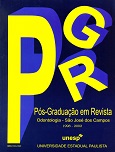Influência da escovação na rugosidade de superfície de materiais restauradores estéticos
DOI:
https://doi.org/10.14295/bds.2001.v4i1.106Abstract
O propósito deste estudo foi investigar a influência da escovação mecânica na rugosidade de superfície do Artglass (Kulzer), Targis (Ivoclar) e Sculpture (Jeneric/Pentron). Oito amostras com 7mm de diâmetro por 2,5 mm de espessura foram confeccionadas para cada material. O Artglass foi polimerizado no forno Uni-XS por 180 segundos, o Targis foi polimerizado no aparelho Targis Power por 25 minutos e o Sculpture foi polimerizado por 60 segundos com os aparelhos XL3000 e Cure Lite com luz especial por 10 minutos. Todos os corpos-de-prova foram armazenados em água destilada a 37o C, por 24 horas. Em seguida, quatro corpos-deprova de cada material receberam acabamento e polimento e quatro não receberam (controle). A rugosidade foi verificada com o aparelho Surf Corder (SE 1700), antes e após os corpos- de-prova serem submetidos a 30.000 ciclos numa máquina de escovação Equilabor usando escova dental (Kolynos) e dentifrício (Sorriso). Foram feitas três leituras em cada corpo- de-prova com perfilômetro Surf Corder (SE 1700). Os resultados foram submetidos à análise de variância e ao teste de Tukey (5%) e indicaram que: a) para os corpos-de-prova sem polimento e antes da escovação, o Targis apresentou média de rugosidade superior em relação ao Sculpture. Nenhuma diferença estatística foi observada entre o Targis e Artglass e entre o Artglass e o Sculpture. Após a escovação, nenhuma diferença estatística foi observada; b) para os três materiais submetidos ao polimento, nenhuma diferença estatística foi observada, antes ou após a escovação; c) os resultados indicaram que a escovação promoveu aumento na rugosidade de superfície para as amostras sem polimento e redução nas amostras com polimento.
Downloads
Downloads
Published
How to Cite
Issue
Section
License
Brazilian Dental Science uses the Creative Commons (CC-BY 4.0) license, thus preserving the integrity of articles in an open access environment. The journal allows the author to retain publishing rights without restrictions.
=================




























